There are lots of ways to work white into your home. If your vision leans more toward relaxed and beachy than clean-lined and glossy, let these inviting interiors give you some ideas. By layering textures, incorporating architectural salvage or even displaying a pair of pajamas, you can create a room that’s casual, calm and interesting.
Paint everything. That’s right, coat the floor, baseboards, walls, banister and more in white, and then furnish the room with white and off-white pieces. The trick to not making this type of design feel flat or stark is to have interesting surfaces (that’s why it works well in older houses and with vintage furniture), which generally adds a touch of the higgledy-piggledy. And vary the white paints and washes you use to give depth to the final look.
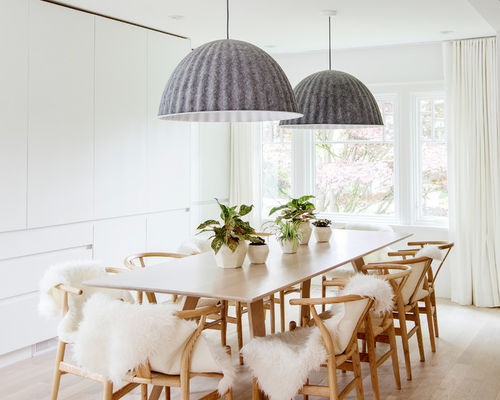
White Palette 1: PURE Design Inc, original photo on Houzz
Layer on. Soften the edges of a crisp white color scheme by layering on tactile textures. Picture this room without the sheepskin throws and felt lampshades, and it would have an entirely different feel.
If you don’t like the idea of using the real thing, Ikea’s Tejn rug just won best faux-sheepskin rug at the PETA Vegan Homeware Awards, but there are plenty of others out there. Linen is another informal, soft textile, and a tufted Berber-style rug is a good choice either on the floor, hung on the wall or flung over the back of a sofa. Soft, pale blankets are also good for draping across the backs of armchairs.
Mix with pale wood. To add texture, wood is a good option as well, and it always warms up a space. But to keep the white-on-white feel going, pick very pale wood or even lime-washed or whitewashed planks that let the grain show through while keeping the wood light.
Choose slipcovers. White or pale sofas and chairs may not seem like the most practical of choices, especially if you have young children or pets. However, you can still pull them off — somewhat literally — by opting for slipcovers, which you can regularly wash.
Swap Out Contemporary Futon Covers for Easy Cleaning
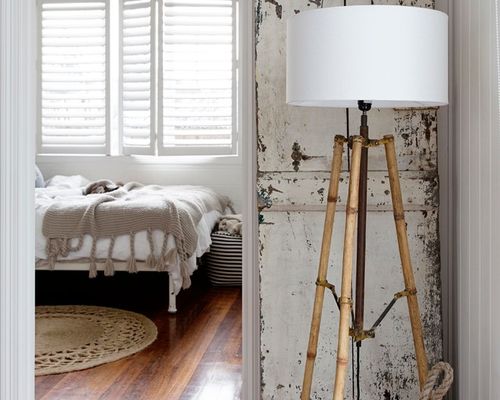
White Palette 2: Lisa Atkinson Photographer, original photo on Houzz
Look for salvage. Seek out white-painted but well-battered antique features — think old shutters, doors, windows (which could be turned into interesting mirrors), oars and even slabs of scrap wood, as they can add character to a white scheme. Search online or visit your local salvage yard and let what’s there inspire you.
This is a clever idea. Rather than expensively, and perhaps incongruously, replacing a new door with an old one, you can simply lean the antique door against a wall for a fabulous feature.
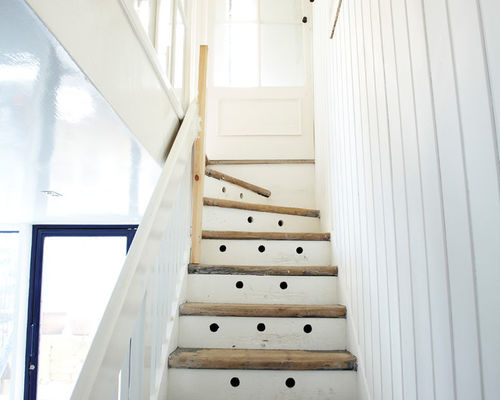
White Palette 3: Chris Dyson Architects, original photo on Houzz
Go with two-tone steps. We already noted that mixing bare wood with white is a good way to relax an all-white scheme. And a staircase can be a good place to put the idea into practice, as the steps are likely already to be wood and you can then simply paint the risers. (You may need to sand and treat the treads —ensure that you make them slip- and splinter-free but not too pristine-looking if relaxed is your aesthetic aim.)
These stairs are in a beautifully restored 18th-century house in London, and the unusual holes provide ventilation for the storage below and create an interesting visual detail that draws the eye upward. Paneled walls can add a beachy feel, which you may think wouldn’t work in an urban house like this, but obviously does.
Another detail to note is the glass paneling at the top of the stairs. Many whites can look surprisingly dingy when starved of light, and the glass ensures that these stairs remain light and bright.
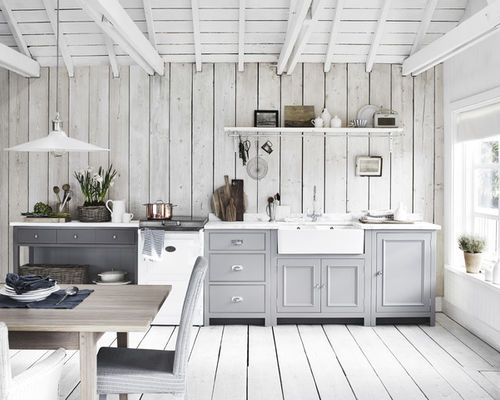
White Palette 4: Neptune, original photo on Houzz
Combine with gray. The overall color of this airy, kick-off-your-shoes kitchen appears to be white, thanks to the expanse of pale-painted walls, floor and ceiling. And yet the comparatively small surface of the kitchen cabinets is painted in pale gray, with a dash of dark gray at the left-hand end of the run. Not only does this gently add depth to the scheme, but it also tricks the eye into seeing gray tones in the whites.
Test different shades on remnants of the wood you’re using in the space to avoid pairing the wrong white with the wrong gray. Prop or hang them up around the room and live with them for a bit, seeing how they look in different lights before committing. It would be a lot of paint to get wrong.
Be artful with accessories. For serious commitment to a look, consider accessories beyond the obvious. If you’re hanging things on hooks that are on display and you’re a purist, the color of what you hang will be important. And if you’re a purist, your family probably is already used to you showing off their pajamas, robes and other garments.
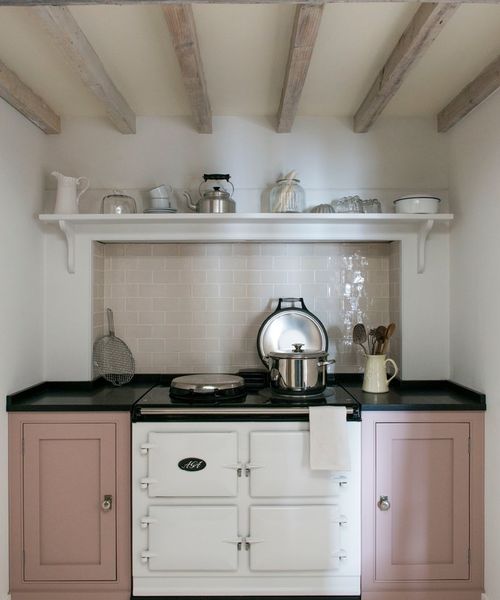
White Palette 5: Mylands, original photo on Houzz
Pair with pink. Millennial Pink is one of the colors du jour — and long may this last if this cute kitchen is anything to go by. We’ve discussed the merits of gray as a barely there accent in an informal white scheme, and this putty pink, while a little more prominent, is just as gentle.
Notice how those tiles are a different shade from the walls and how the ceiling is different again. As before, sample paint pots will be your friend for getting the pairings just right.
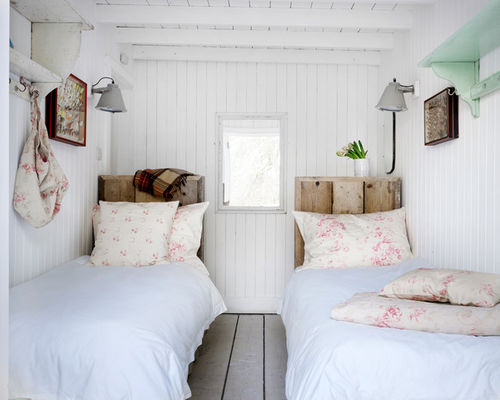
White Palette 6: Cabbage & Roses Ltd, original photo on Houzz
Flower up. This pocket-size bedroom makes use of all the tricks to add interest and easy style to an all-white scheme. Wood-paneled walls, yep. Pink, uh-huh. A dash of gray, indeed. Antiques? Check. Oh yes and battered bare wood, that too.
One new touch, however, is the addition of a soft floral print in those pillows. Faded is the way to go for this look. So too is an informal arrangement that blends warmer and cooler whites, as seen where the pillows meet the duvet covers.

